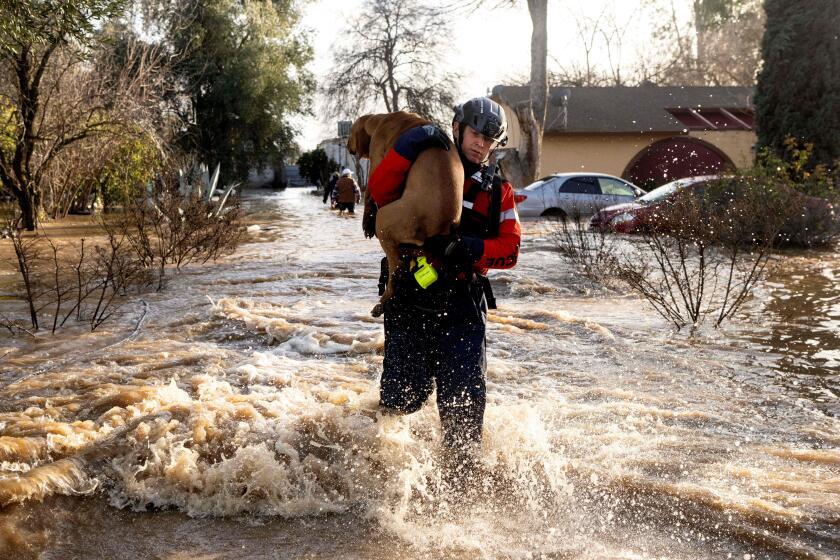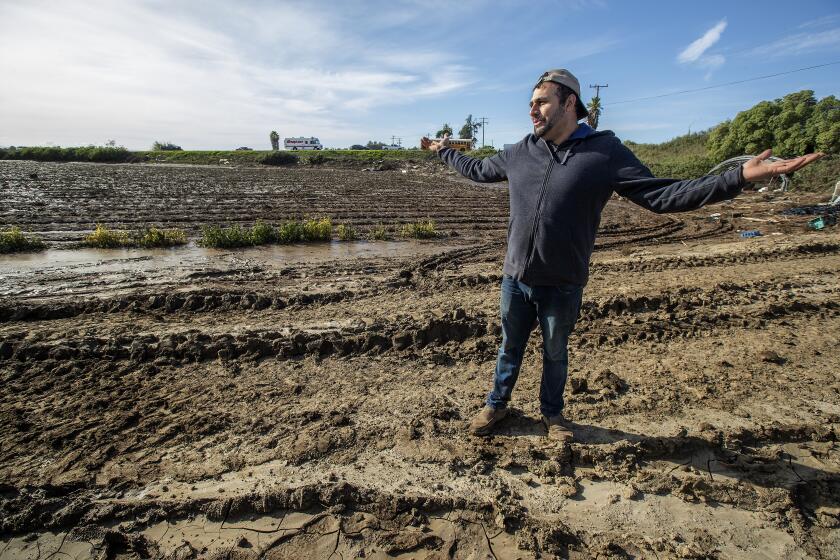January storms leave L.A. County flood-control dams at risk of overflowing
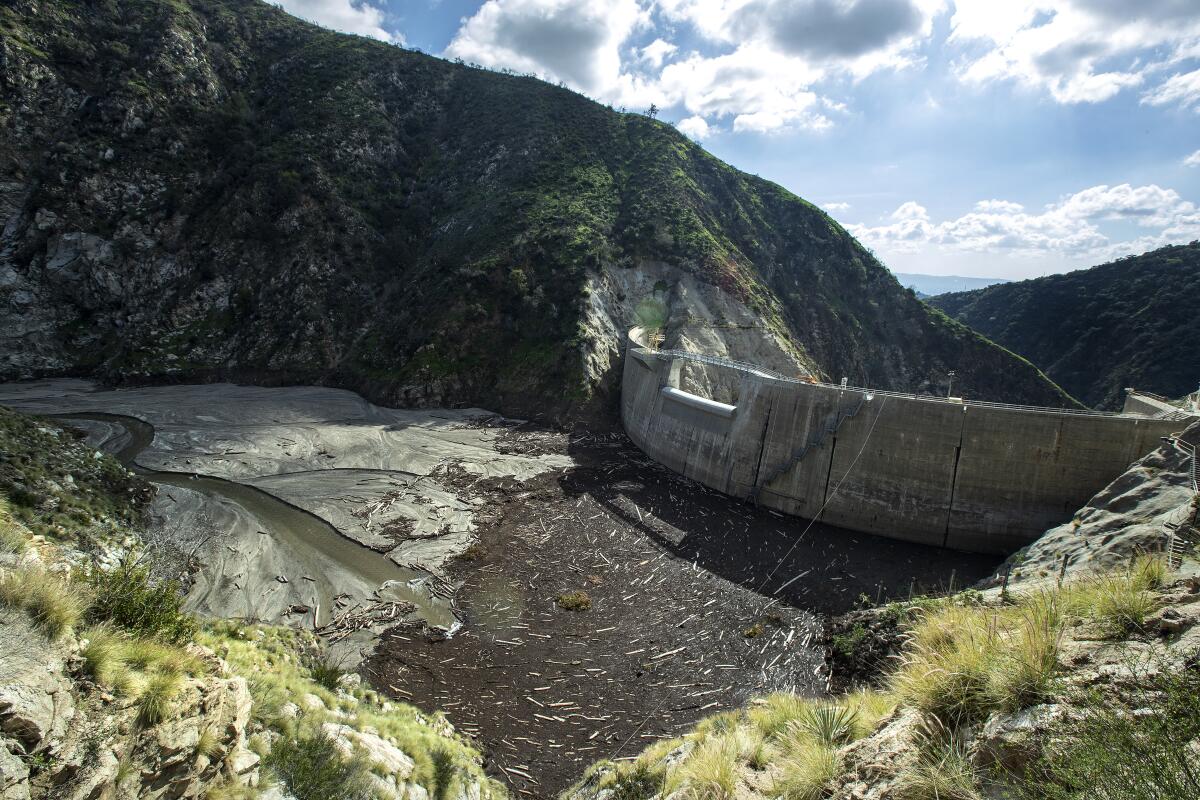
- Share via
Now that the shock of a series of January storms has worn off, Los Angeles County officials face a herculean chore: Five reservoirs along south-facing San Gabriel Mountain slopes are filled with so much debris and soupy mud that they pose a flood risk to the communities below.
Another intense storm, they say, could unleash new surges of dirt, toppled trees and boulders down canyons stripped of their binding vegetation by the 2020 Bobcat fire, sending chocolate-colored floodwaters over the dams and into the cities of Arcadia, Sierra Madre, Pacoima, Sun Valley and Sunland.
An urgent concern is emptying the reservoir behind 96-year-old Santa Anita Dam of about 600,000 cubic yards of muck more than 80 feet deep. Two of the three valves that control releases of stormwater from the 20-story-tall dam are blocked with silt.
“It could flood, and we’re busting our tails to make sure that doesn’t happen,” said Sterling Klippel, principal stormwater engineer at the L.A. County Department of Public Works.
Built in 1927, the structure is a critical component of a sprawling network of 14 dams, 487 miles of flood-control channels, 3,330 miles of underground storm drain channels, and dozens of debris basins and spreading grounds built over the last century to prevent flooding and to capture stormwater for groundwater recharge in local aquifers.
Experts say California’s recent series of storms was no more severe than what the state has experienced in the last century.
Just as the combined effects of atmospheric rivers and global warming have revealed themselves in drought, extreme wildfire behavior and flooding across California, they are also putting the county’s flood-control system to the test.
“We have to keep up with these environmental changes and challenges,” said Mark Pestrella, director of the county Department of Public Works.
That won’t be easy or cheap. The price tag for removing an estimated 15 million cubic yards of debris and mud from all five reservoirs and hauling it to sediment placement sites across the foothills is about $550 million, Pestrella said.
That money is expected to come from county funds, state and federal grants and, perhaps, an assessment agreed to by property owners, officials said.
“We don’t have a never-ending pocket full of change,” Pestrella said. “As it stands, property owners in the county are charged $28 annually for these kinds of improvements — and that hasn’t changed since the 1980s.”
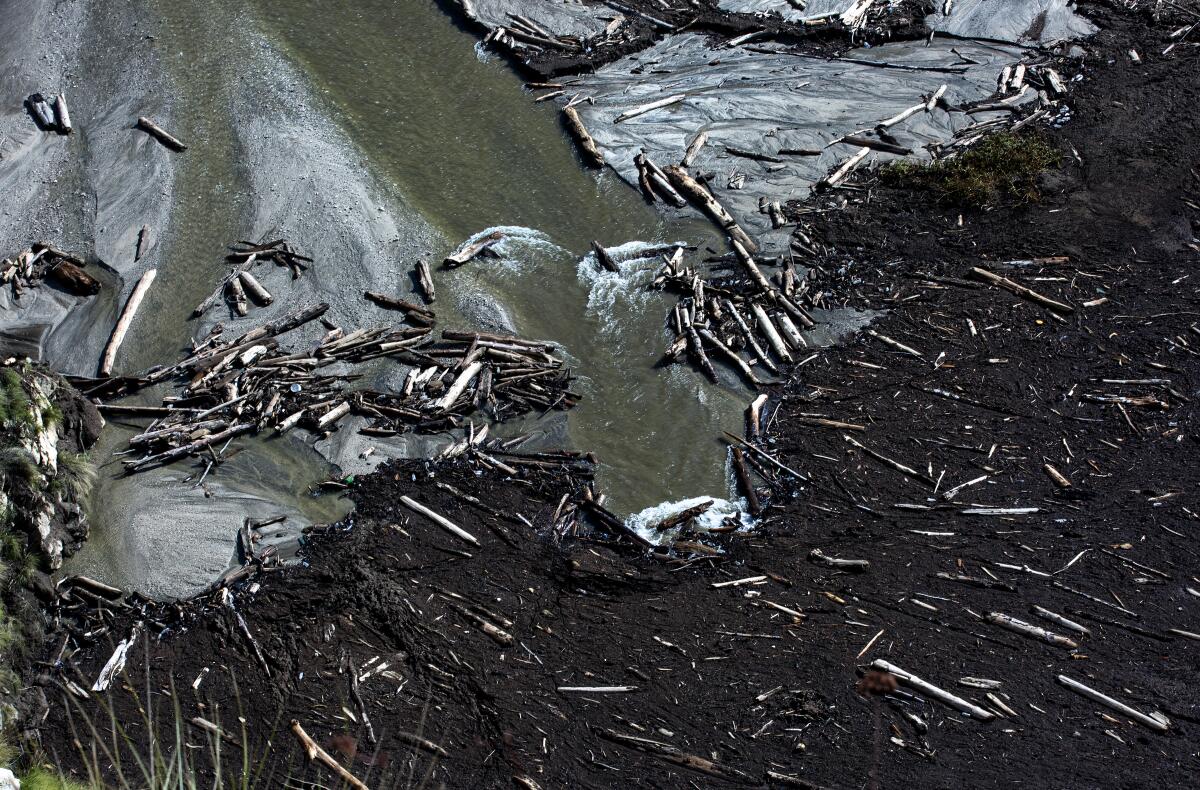
The estimated volume of debris and mud targeted for removal from the other four facilities includes 3 million cubic yards from Big Tujunga Dam, which protects Tujunga; 2 million cubic yards from Cogswell Dam, which controls flooding in the West Fork of the San Gabriel River; 4.5 million cubic yards from Pacoima Dam, which protects Olive View-UCLA Medical Center, Sun Valley, and Sunland; and 5 million cubic yards from San Gabriel Dam, which controls outflow from San Gabriel Canyon’s 200-square-mile watershed.
Water from San Gabriel Dam churns down the canyon to Morris Dam, a facility a few miles above Azusa that former President Hoover dedicated in honor of Los Angeles consulting engineer Sam Morris in 1934.
The significant loss of vegetation due to the Bobcat fire has heightened risk of flooding, debris flows and mudslides. Such events could prevent the dams from making controlled releases.
It took about four years to remove 330,000 cubic yards of sediment from behind Santa Anita Dam in the aftermath of the massive 2009 Station fire.
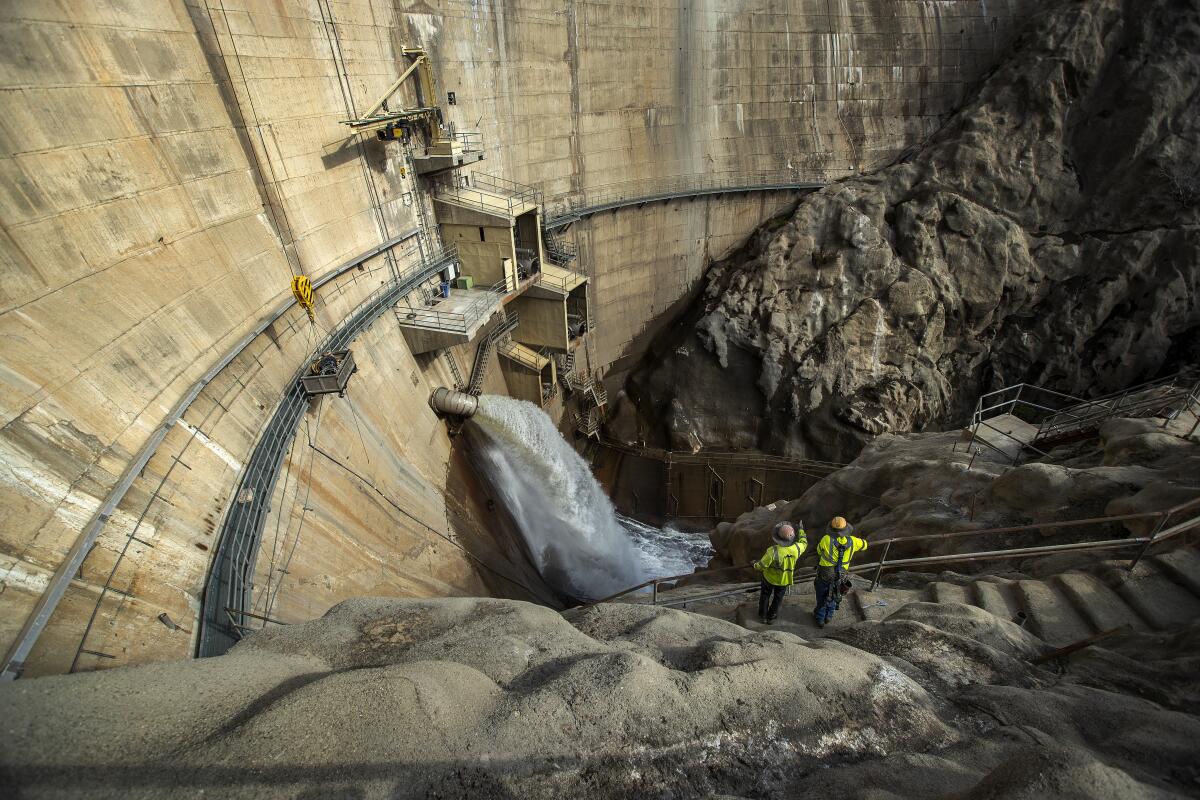
It may take three more years, Klippel said, to clean out the material that has accumulated behind the dam since the Bobcat fire roared through the heart of the watershed two years ago.
The Santa Anita Dam reservoir was “completely clean to increase storage capacity when the Bobcat fire hit,” he said. “Just look at it now.”
The Bobcat fire burned about 116,000 acres of forest between the San Gabriel and Antelope valleys and destroyed 160 homes and buildings. It was one of many wildfires that broke out in August and September — blazes that made 2020 the state’s worst fire year on record. More than 4 million acres burned, and dozens of people were killed.
The Los Angeles County Board of Supervisors voted later that year to mobilize department resources to support communities devastated by the fires.
After a series of violent storms, California farmworkers must cope with flooded homes, dangerous job conditions and lost wages.
Since then, Supervisor Kathryn Barger has been monitoring the grant requests and proposed emergency actions still wending their way through complex permitting processes required to launch and complete repair and restoration projects.
“It is imperative that our crews complete this debris removal work to preserve the integrity, safety and capacity of our flood-control system,” Barger said.
“The torrential rains we experienced recently can quickly pose a flood risk to our local communities and lives could be at stake,” she added. “This is an immense task — so I will continue to track progress to ensure the job gets done.”
